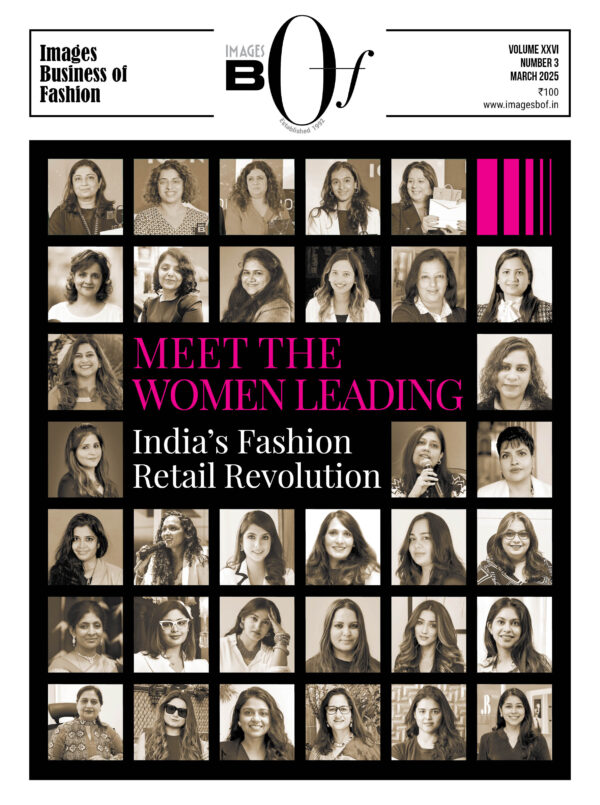In today’s rapidly evolving fashion landscape, the ability to swiftly and accurately discern consumer preferences is paramount. As global and local influences continuously reshape consumer tastes, the challenge for fashion brands and retailers lies not only in tracking these changes but also in adapting organizational processes to meet and anticipate these dynamic needs effectively.
A panel at India Fashion Forum 2024 explored the strategic integration of Artificial Intelligence (AI) with the irreplaceable human touch as a powerful approach to crafting relevant product propositions that resonate with consumers at scale.
On the panel of experts were:
- Anshika Gambhir, Associate Director, Bewakoof
- Ishendra Agarwal, Founder, Giva
- Partha Sinha, Head of Design & FIT, Private Brands – Amazon
- Sugam Asani, Chief Brand Officer, BESTSELLER India
- Suyash Motarwar, CPTO, VIRGIO

The session was moderated by Ganesh Subramanian, Founder & CEO, Stylumia.
He started the session by asking the panel whether the idea of retail, especially fashion retail was to win the consumer using technology in a constantly evolving industry. The question was, what are brands doing in their space to understand the consumer on an ongoing basis so as to conceive propositions which have high probability of winning?
Sugam Asani opened the debate saying, “I think it’s become more and more difficult to please customers. Their demands are changing, they’re moving through products faster and so retailers are left with a lot of inventory. For retailers, this leftover inventory is a huge cost, coupled with the extra discount retailers are forced to give to liquidate this inventory.”
BESTSELLER, he says, follows a technology aided approach to grapple with this. “We call it the simple sandbox approach wherein we create a small capsule of say only 200 pieces for a Jack & Jones product. While this proves expensive at first, it helps to test market with the data that we collect. This helps us understand which markets work for which products. We keep multiplying the product production as it becomes more and more popular.”
 At Giva, said Ishendra Agarwal, we use technology and AI in multiple elements. “We use it at the time of identification of a store – where we use data providers to educate us on the catchment area like the income profile of the people living there, the brands already available there, average bill per sale generated etc. – and then correlate this data with a store in a similar catchment area to figure out whether launching a store in that particular market will do well or not. This helps us in predicting our store locations in a much more refined way.”
At Giva, said Ishendra Agarwal, we use technology and AI in multiple elements. “We use it at the time of identification of a store – where we use data providers to educate us on the catchment area like the income profile of the people living there, the brands already available there, average bill per sale generated etc. – and then correlate this data with a store in a similar catchment area to figure out whether launching a store in that particular market will do well or not. This helps us in predicting our store locations in a much more refined way.”
“We also use it to improve the experience of a customer, right. We have 100 stores and in order to provide a seamless experience across channels, we leverage a lot of technology. The data also helps us understand merchandising and bases the online catchment, we can also define product assortments for our stores,” he explained.
Using AI to Track Trends & Challenges
Partha Sinha said, “There are two kinds of kinds of trends which I have been focusing on. One such AI-led trend tool is of course, Stylumia. Then there is another external tool, which provides input on real time trends – what’s happening now and what has the potential to be built up in future. We have another internal tool which throws light on customer pain points and customer challenges.” “These AI tools are extensively useful in solving customer problems, in that they reduce the amount of time needed to do a job which is analyzing data. Speed in sifting through data with AI helps brands and retailers in taking decisions much faster, giving them leverage above competition,” he stated.
Suyash Motarwar of VIRGIO added that AI’s work for his brand starts much before the designing process and that is around trend forecasting, then goes on to the design process, production and post production and then the final leg when the product hits the market and faces the consumer.
“A lot of work has been already done by brands in terms of personalized recommendations based on first party data. The focus is now on the first two legs – identifying trends, the colours of the season, the silhouettes that are going to work etc. – which is zeroed in on by sifting through copious amounts of sales, geography specifics and social media data,” he said, adding, “AI helps us cater to this scale of design requirement with the help of a nimble team.” He said his brand has been able to implement lot of solutions which is helping them do design iterations much faster than what they could some months ago.
Anshika Gambhir of Bewakoof chimed in here saying that her brand uses technology to understand its major audience which is either Gen Z or Millennials, their aspirations. “We want to understand where our user stands. If you have the right data at the right time, you can provide better products, become a trendsetter, make more money and earn profits and capture more of the market share.”



